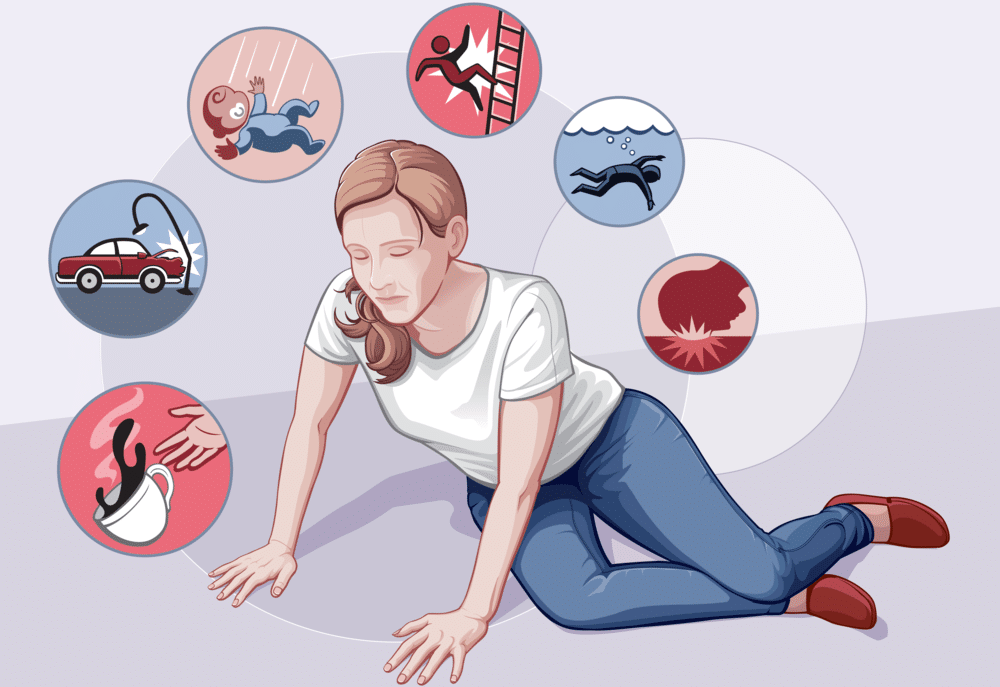Medical marijuana has been used for thousands of years to treat various ailments. But while there’s plenty of evidence that it can relieve pain and nausea, there are still many questions about its safety and effectiveness.
Several studies suggest that cannabis products from places like sky high meds may help to reduce seizures in people with certain types of epilepsy, like Dravet syndrome and Lennox-Gastaut syndrome. But more research is needed before it’s approved by the FDA.
It’s also worth noting that in to grow marijuana in New York (as well as certain other states where it is legal for medical use) to meet your needs, or buy it from licensed dispensaries, you may require a medical marijuana card ny. Let’s now take a look at some of the conditions that medical marijuana could have a positive impact on when it comes to treatment.
Epilepsy
If you have epilepsy, you know it can be challenging to manage your seizures. But if you live in a state where medical marijuana is legal, you might be able to take this safe, natural herb to help control your seizures. A dispensary is a legally recognized business that can keep and provide medical marijuana and related accessories to authorized users and caregivers. A licensed and situated medical cannabis cultivator offers the medical cannabis that the nearest dispensary sells.

A person with epilepsy experiences seizures when there are electrical disturbances in their brain. These electrical disruptions cause changes in their awareness (including loss of consciousness), sensations, emotions and muscle movements.
Seizures can occur all over your body, including in different parts of your brain, and can last from seconds to an hour or more. During an episode, you can’t remember what happened or where you were when it started.
While the condition can be a lifelong challenge, epilepsy is usually managed with medication and can reduce or eliminate seizures in most people. But sometimes, medication doesn’t work, and people must try other treatments or surgery.
Treatment options include dietary changes, medications, devices and surgery. Your neurologist may recommend a combination of these or a single medication.
Before you begin treatment, your doctor will review your medical history and ask about any other issues contributing to your seizures. They’ll also perform a physical exam and order tests.
Your healthcare provider will then classify your seizures by their type and how long they last. They’ll also ask about your feelings and what you did during your attack.
A good idea is to keep a diary about what triggers your seizures. It might be a particular food or beverage, certain times of day, exceptional circumstances or environmental factors. This can help you pinpoint what might be triggering your seizures and determine whether or not you need to adjust your medications.
Chronic Pain
A condition known as chronic pain refers to pain that lasts longer than three months. Usually, you would expect this pain to go away once the underlying cause is treated.

However, it can be difficult for many people to manage chronic pain. It can prevent them from functioning at their best, and they may find that the pain interferes with their sleep and moods.
The good news is that many different treatments can help. Some are drug treatments, while others involve non-drug therapies like physical therapy or nerve stimulation.
Medical marijuana has been shown to work on patients with various pain conditions. For example, the cannabinoids found in cannabis can help reduce inflammation.
It can also provide pain relief without a high risk of addiction or withdrawal symptoms. In fact, some people who use medical marijuana for pain report that they feel better when using it than with other medications.
This is a result of something called the placebo effect. The cannabinoids in cannabis are thought to activate a part of your brain that tells you to believe the substance is effective.
When the brain believes the substance is effective, it will signal your body to relieve pain. This can be very helpful for pain sufferers who haven’t been able to find relief with traditional treatment options.
Several randomized studies have been conducted to see how the active compounds in cannabis, including delta-9-tetrahydrocannabinol (THC) and cannabidiol (CBD), interact with your brain to reduce pain. According to the findings of these studies, cannabis’ active compounds reduce both the severity, frequency and duration of pain. You are not allowed to use your high-THC medication in public or on public transportation, according to florida medical marijuana laws. Although it cannot be used in public, it is still legal to possess in public. It is acceptable to use CBD-only low-THC medication in people.
Anxiety
All facets of life can be impacted by anxiety, a mental health condition. It can be an overwhelming feeling that is often difficult to manage and can cause severe consequences for the person suffering.
There are many treatments for anxiety disorders. They include antidepressants, psychotherapy and even tranquilizers like benzodiazepines.
People who suffer from panic attacks, social phobia or post-traumatic stress disorder are among those who may find relief with medical marijuana. This is because of the plant’s calming effects and can be used in conjunction with therapy and other methods to treat anxiety symptoms.
Medications commonly prescribed for anxiety include antidepressants such as SSRIs (selective serotonin reuptake inhibitors) and SNRIs (serotonin and norepinephrine reuptake inhibitors). These medications can help alleviate symptoms and may be an effective treatment for those who experience severe bouts of anxiety.
However, they also come with their own side effects. Some medications can cause insomnia, dizziness, drowsiness and unpleasant symptoms.
CBD, a non-psychoactive substance in the cannabis plant, has been shown to relieve many of the same symptoms of anxiety as THC without adverse side effects. Research has also looked at the plant’s terpenes to see whether they can provide additional therapeutic benefits.
The endocannabinoid system is a crucial nervous system component that regulates our emotions and anxiety responses. Studies show that anxiety becomes more intense and prolonged when this system is impaired by stress or trauma.
As a result, cannabis can help reduce the severity of anxiety in some individuals and increase it in others. This is because cannabis activates the cannabinoid type 1 receptor, which has anxiolytic effects on the brain. In addition, it has a soothing effect on the brain that can decrease cortisol levels.
Glaucoma
Glaucoma is a chronic eye disease that can lead to partial or complete blindness. Numerous things contribute to its occurrence, including the eye’s high pressure, which can harm the optic nerve.
Fortunately, several treatments can help manage the symptoms of glaucoma and prevent vision loss. These include prescription eye drops and some forms of surgery.
Many people suffering from glaucoma are curious about medical marijuana and what it can do for them. Some believe cannabis can relieve pain, ease nausea, and even control glaucoma-related side effects like stomach problems and uncomfortable inflammation.
However, there is no evidence that cannabis effectively reduces eye pressure. And if it were, it would be used in conjunction with other treatments.
As a result, doctors are reluctant to recommend the drug as an anti-glaucoma treatment. That’s because it does not have the same effects as other glaucoma medications, and its short duration of action makes it difficult to use consistently.
The primary psychoactive component in marijuana, THC, has been proven to reduce eye pressure, but only temporarily. It can also cause hallucinations and delusions if taken at high doses.
Another chemical in the plant, CBD, has not been proven to lower eye pressure, although it does have anti-inflammatory and pain-relieving properties. It is thought that the effects of cannabis on glaucoma are mainly due to THC’s mood-altering effect.
Ultimately, the best treatment for glaucoma is maintaining low eye pressure daily. This is done through eye drops or surgical procedures, which can keep glaucoma under control for months and even years.
Multiple Sclerosis
An autoimmune disease called multiple sclerosis (MS) causes your immune system to attack the fatty substance that covers and shields the nerve fibers in your brain and spinal cord. This inflammation disrupts messages that travel through the myelin. They may move more slowly, become disorganized, go in the wrong direction, or fail to pass through altogether.
Several different symptoms can be caused by MS, including muscle weakness, coordination and balance problems, numbness or tingling, and loss of vision. The condition also can create emotional and mood symptoms, such as depression.
Although there is no known treatment for MS, several drugs can help to manage the condition and stop relapses. These medications are often referred to as immunosuppressants.
Medical marijuana may help relieve some symptoms of MS, such as pain, fatigue, and anxiety. Thanks to its anti-inflammatory properties, myelin swelling, which contributes to MS symptoms, can be lessened.
Several studies show that cannabis can ease stiffness and muscle spasms that are common with MS. This could be due to the active compounds in cannabis, called cannabinoids.
Marijuana may also improve sleep and ease depressive symptoms in some people with MS or other chronic conditions. This may be because cannabinoids can help to increase the body’s production of melatonin, a hormone that helps regulate sleep.
A nationwide survey of patients with MS conducted by researchers at the Cleveland Clinic found that most rely on themselves or other sources of medical guidance for information about medical marijuana use. In addition, most report that they had used cannabis at least once before a diagnosis of MS was made.






